‘First class. Ranks among the 10 finest specimens in existence.’[1] With this sentence Emil Herrmann, like many other experts before and since, paid homage to a masterpiece crafted by Antonio Stradivari: the ‘Betts ’. While the list of admirers of this violin only continues to grow, its discovery in London in the first half of the 19th century was pure chance.
According to a story that has the scent of a legend, one day a man walked into the shop of ‘J. Betts & Co.’ at no. 2 North Piazza of the Royal Exchange carrying an instrument he hoped to sell. A deal was struck and the unknown man left the store relieved of his load. But what at first seemed quite a straightforward transaction was in fact an unexpected coup.
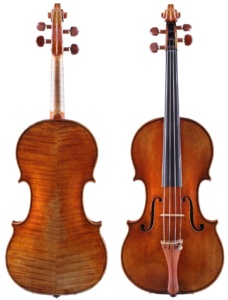
The ‘Betts’ Stradivari, 1704, Gift of Gertrude Clarke Whittall, 1935 (Photo by Michael Zirkle)
Who were the protagonists of this anecdote? Little is known about the identity of the seller, who has been described somewhat fancifully as a man in the guise of a ‘gentleman’s servant,’[2] as ‘an individual of unprepossessing appearance,’[3] and even as an ‘untidy, out-at-the-elbows individual’.[4] We may never know the name of the seller but the buyer, who had quite possibly made the deal of his career, was Arthur Betts (1776 -1847), the younger brother of the established violin maker John Betts.[5]
Little is known about the identity of the seller, who has been described somewhat fancifully as a man in the guise of a ‘gentleman’s servant,’ as ‘an individual of unprepossessing appearance,’ and even as an ‘untidy, out-at-the-elbows individual’.
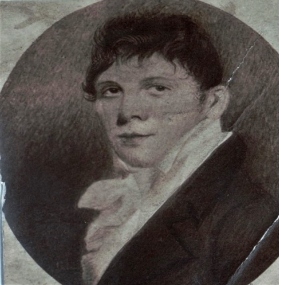
Portrait of Arthur Betts (Photo courtesy of Penny Vincent)
When Arthur was nine years old, he had been sent from Stamford to London to live with John and receive a music education. Within a few years he was recorded as an apprentice in his brother’s shop. The young boy developed a passion for music, studying with Giovanni Battista Viotti, among others, and later became a music teacher and a composer. A number of his compositions are in the collection of the British Library. Despite the fact that he never made instruments,[6] he ‘relied on the sale of instruments for his living’,[7] and took over the family business after John’s death in 1823.
For a violin connoisseur with Betts’ reputation it was not unusual to be visited by merchants and travelers of all sorts trying to sell their goods, so it isn’t a surprise that Arthur Betts did not bother to ask the stranger his name. But how is it possible that a violin of this quality and in such pristine condition failed to arouse his curiosity? Wouldn’t he have been interested to hear the story of this instrument and to learn the identity of its owner? These are all legitimate, if not obvious questions, but it won’t be easy to answer them. On one hand he might have spent more time quizzing the seller to know more about the provenance of this wonderful violin, had he not just purchased it for only a few shillings. At the time, a good Stradivari instrument was worth a few hundred pounds. No wonder that as soon as the deal was closed the experienced trader was anxious to be rid of the naïve seller. On the other hand, he might have indeed learned more about the violin’s provenance, but, because he bought the violin for such a bargain, he elected not to record the name of the seller. The ‘Betts’ possesses such striking features that almost everyone remains convinced that Arthur Betts was aware of the gem he had just bought. Indeed, Edward Goodwin once wondered if ‘he had any qualms of conscience in profiting so enormously by the ignorance of the vendor.’[8]
Franz Meyer[9] and Dirk Balfoort generously gave him the benefit of the doubt, recording that Betts bought the ‘neglected’[10] instrument from the very poorly dressed man out of pity. According to their version of the story, once Betts discovered that he had purchased one of the finest masterpieces of the Cremonese master, he tried to locate the man who had sold it to him. Alas, he was not to be found. But this story doesn’t ring entirely true.
Firstly, there is debate about the exact price Arthur Betts paid for the violin, which grows from ‘twenty shillings’[11] to ‘one guinea,’[12] but never exceeds one pound, one shilling.[13] The amount must have been quite low because Betts chose not to record it. Or perhaps he decided against recording the figure because the deal turned out to be such a success that Betts obstinately refused to share the proceeds with his partner and nephew Charles Vernon, resulting in the termination of their partnership.
The deal turned out to be such a success that Betts obstinately refused to share the proceeds with his partner and nephew Charles Vernon, resulting in the termination of their partnership.
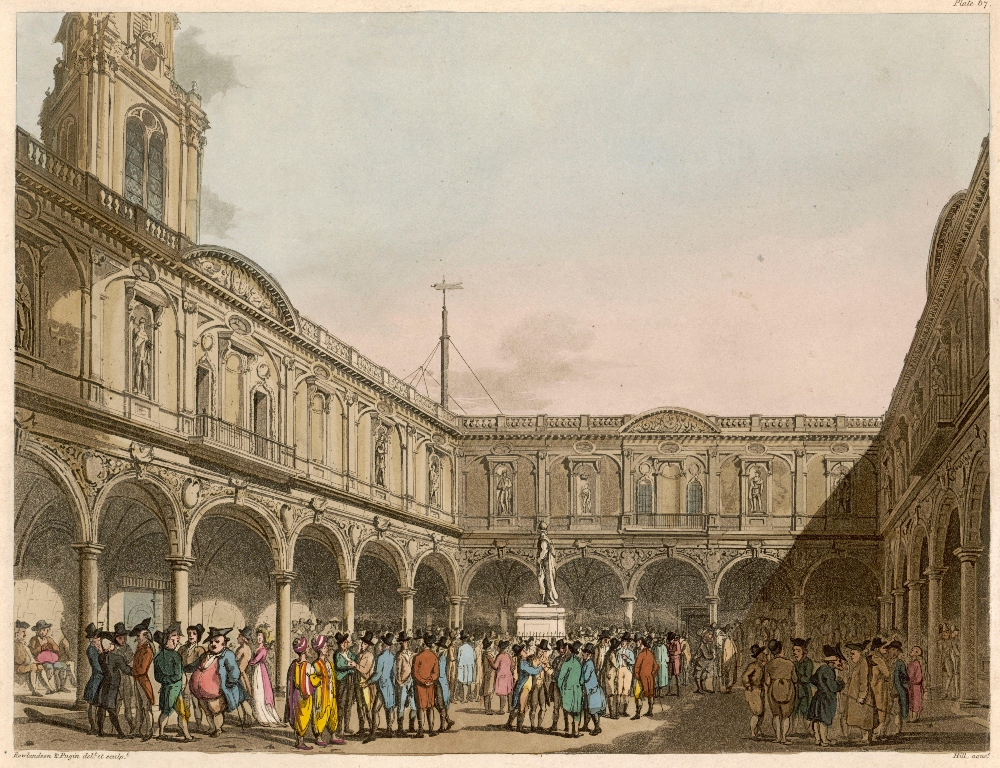
The Royal Exchange in 1809. The Betts shop was located in the North Piazza, to the right of the image
It is unclear when exactly Arthur Betts bought the violin. It must have been around 1825 as he was already in charge of his brother’s shop, but it had yet to be renamed; in 1829, following Vernon’s departure, the firm’s name was changed to A. Betts. Later on, in 1838, the firm was called Arthur Betts[14] and this appellation was maintained after Arthur’s death, when his sons, Arthur II and John II, carried on the family business.
Speculations abound as to why the stranger sold this Stradivari instrument for such a modest amount. Perhaps he wasn’t its true owner and had come into its possession by illegitimate/illegal means. This could explain why he sought to get out of it as quickly as possible. One other explanation for his unusual behavior is that he believed he was selling a cheap copy and not an original. Imitations were popular at the time, and it was widely known that the Betts’ shop traded in modern makers. An anecdote that circulated in several magazines is illustrative. Apparently, only a few years earlier, the great Viotti, hoping to take advantage of the owner of a beautiful Stradivari violin, asked John Betts to make a counterfeit version. According to this tale, the virtuoso intended to return the copy to its owner and keep the original for himself. In the end, the plan failed and Betts had the last laugh: the shrewd violin-maker made two copies and enjoyed the original.[15] In the case of the ‘Betts’ violin, if the seller thought this was a copy of a Stradivari violin, he was much mistaken.
What is so special about this violin? It is generally regarded as ‘the finest early example of Stradivari’s “Golden Period”.’[16] The Hills went as far as to describe it as ‘one of the great productions of Stradivari’s life.’[17] At the time of its purchase by Arthur Betts, its condition was so pristine that Hugh Reginald Haweis remarked: ‘When John Lott opened it in Vuillaume’s presence, he found the original bass-bar.’[18] Some have argued that not all parts of this violin were perfectly executed, but the combination of its harmonious form, full arching, and tonal qualities make it quite ideal. As with the best examples of Stradivari’s craftsmanship, the wood employed here is of excellent quality. Its two-piece back — made of handsome, perfectly matched maple cut on the quarter and marked with vivid curls of medium width ascending from the center joint — is almost identical to that of the ‘Sleeping Beauty’. In fact, the strong resemblance was what convinced the Hills that the ‘Sleeping Beauty’ also must have been made in 1704. Another remarkable feature of the ‘Betts’ is its corners, which are considered among the longest of all Stradivari’s violins.[19] The purfling is elongated to the limit and terminates in a bee-sting of rare sharpness. The varnish also deserves to be mentioned: unlike many old masterpieces, here it is still plentiful and maintains a pleasant orange color over a golden ground.[20]
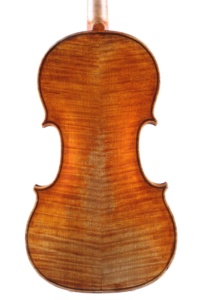
The ‘Betts’ Stradivari, 1704, Gift of Gertrude Clarke Whittall, 1935 (Photo by Michael Zirkle)
‘Eight hundred guineas seems a long price for a dealer to give; but after all here is a Violin, a picture, and a miracle all in one; and big diamonds increase in number; but these spoils of time are limited for ever now, and, indeed, can only decrease by shipwreck, accident, and the tooth of time.’
When Arthur Betts died in 1847, the violin was still in his possession. Around 1852, it was sold to John Bone of Devonport, a retired judge of the Indian Civil Service and an amateur player and collector of violins, whom the Hills ungraciously described as being ‘much addicted to the malady of continually exchanging instruments.’[21] True enough, Bone was but the first of many. In fact, just a few years later in 1859, Vuillaume, with the help of John Lott, got hold of the violin only to resell it a short time later to the talented amateur player and enthusiastic collector Charles Willemotte of Antwerp. Willemotte kept the violin for more than ten years before selling it to another distinguished collector, Caspar Gottlieb Meier, in 1873. According to George Hart, Meier ‘had waited patiently for years to become its owner [and] would scarcely permit any person to handle it.’[22] Nevertheless Hart himself found a way to convince Meier to part with the violin and in 1878, he sold it for the astonishing sum of £800.[23] The news spread so quickly and caused such a reaction that Charles Reade felt compelled to rush to Hart’s defense writing to the editor of the Globe: ‘Eight hundred guineas seems a long price for a dealer to give; but after all here is a Violin, a picture, and a miracle all in one; and big diamonds increase in number; but these spoils of time are limited for ever now, and, indeed, can only decrease by shipwreck, accident, and the tooth of time.’[24]
Hart was very pleased with the purchase and determined to keep the violin. He explained to his colleague Hawley: ‘As I mentioned to you in my last letter, I possessed myself of it without any idea of putting it in our business for sale.’[25] But fate had other plans for the ‘Betts’, and the Duc of Camposelice was soon to be its next owner. Despite what his title would suggest, Nicolaas Reubsaet, better known as Duc of Camposelice, was not born into royalty, but rather to a shoemaker. Thanks to his charm, imagination, and audacity, he managed to establish himself as tenor and violinist under the name of Victor Reubsaet, fashioning himself the son of a ‘Lieutenant Colonel in the Austrian army and a Swedish countess, sole heir of an uncle whose convenient death conferred upon him the title of “Vicomte d’Estenburgh de Bloemendaal.”’[26] It was a completely invented pedigree.
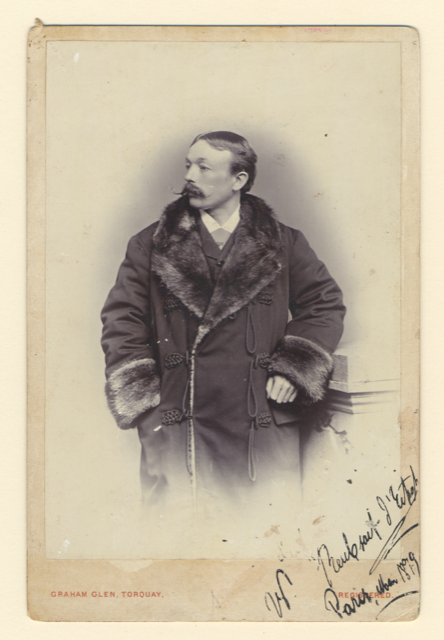
Victor Reubsaet, Duc of Camposelice, 1879 (Archives of the City of Sittard-Geleen, Netherlands. Courtesy of Prof. Sylvia Kahan)
Reubsaet later married Isabella Singer, the widow of the sewing machines magnate, Isaac Merritt Singer, who had left her a colossal fortune. After their marriage, Reubsaet began to collect valuable stringed instruments, held a respected music salon in Paris, and was even given a real Dukedom: ‘In 1880, the recently minted nobleman suddenly ‘discovered’ the papers verifying the long-buried ducal title held by his ancestors. Victor presented his implausible, convoluted stories of long-lost noble uncles and missing documents with such flair that he was able to convince any number of credulous Dutch, Austrian, and Italian officials of their veracity — no doubt after generously greasing quite a number of palms. After taking the precaution of becoming a naturalized Italian subject, Victor Reubsaet re-emerged as the Duc de Camposelice, the title having been conferred upon him by no less an eminence than King Umberto of Italy.’[27] Being born as the son of an artisan, Reubsaet had climbed the social ladder to be subsequently celebrated as a member of the aristocracy.
In 1886, the Duc of Camposelice was able to convince Hart to sell him the ‘Betts’ for the handsome sum of £1,200. Following the duke’s death one year later, his widow contacted the Hills in order to dispose of a collection that included more than ten Stradivari instruments, several violins by Guarneri del Gesù, and several Tourte bows.[28] A long negotiation ensued and the first instruments only began to make their way to London in August of 1890. When Alfred Hill returned from Paris in 1892 with the last two instruments of the Camposelice collection — the ‘Betts’ violin and the ‘MacDonald’ viola — his brother recorded: ‘This is indeed a red letter day in the history of the firm. I do not think any other dealer or person could have bought three[29] such nuggets in one day.’[30] An inscription was inserted inside the ‘Betts’, on the lower bout, to memorialize this event: ‘Purchased from the Duchess of Camposelice by W. E. Hill & Son March 1892.’
Prospective buyers for such a treasure were not hard to find, and within two months the ‘Betts’ was sold to Jacques Zweifel, a German amateur player. After developing a series of health problems, the new owner had to return the violin and the ‘Betts’ was then bought shortly afterwards by the English collector Robert E. Brandt. Like his predecessors, Brandt too exchanged it for another Stradivari, the ‘Jupiter’, in 1898, and within a couple of weeks the ‘Betts’ had found a new home in Scotland by R. D. Waddell, a sausage manufacturer from Glasgow. A canny businessman, Waddell had also recently purchased the ‘Leduc’ Guarneri del Gesù violin. He was immensely proud of his instruments, which he mentioned as often as possible in the press, proclaiming loudly that he would never part with them.[31] In fact, he sold both to Jay C. Freeman, representative of The Rudolph Wurlitzer Company, and so the ‘Betts’ left Europe for good in 1923.
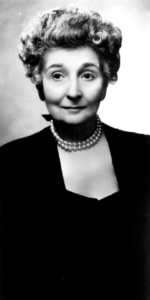
Gertrude Clarke Whittall, ca. 1940 (Library of Congress Music Division, Washington, D.C.)
In the United States, the ‘Betts’ found a home first in the collection of John Taylor Roberts,[32] and then with Gertrude Clarke Whittall, who, in 1935, donated it along with three other Stradivari instruments — a violin, a viola, and a cello — and four Tourte bows to the Library of Congress of Washington, D.C. Two years later Whittall added to her gift also the ‘Ward’ Stradivari and another Tourte bow.[33] Describing the ‘Betts’ to a friend, Whittall said: ‘[It] is of royalty; it is outstanding in beauty and perfection, and, as Walt Whitman once said of Mt. Shasta, “Alone as God”.’[34]
[The ‘Betts’] is of royalty; it is outstanding in beauty and perfection, and, as Walt Whitman once said of Mt. Shasta, “Alone as God”
Thanks to Prof. Judy Sloan, Carol Lynn Ward-Bamford, Prof. Sylvia Kahan, Laurie Niles, Dr. Anthony Betts, Christopher Germain, Philip Kass, Dr. Bill Sloan, Roberto Regazzi, David Van Zandt, and Michael Zirkle for assistance with archive material.
Alessandra Barabaschi is an Italian art historian and has authored several books including the four-volume ‘Antonius Stradivarius’.
Notes
[1] ‘Betts’, The Jacques Français Rare Violins, Inc. Photographic Archive and Business Records, 1844-1998, Archives Center, National Museum of American History, Smithsonian Institution, Washington.
[2] Henley, William, Antonio Stradivari, master luthier, Cremona, Italy, 1644–1737: his life and instruments, Amati Publishing Ltd, Brighton, Sussex, 1961, p. 43.
[3] E Doring, Ernest N., How Many Strads? Our Heritage from the Master, Bein & Fushi, Chicago, 1999 (1945), p. 123.
[4] Lyon & Healy, The Hawley Collection of Violins, Chicago, 1904, p. 23.
[5] According to The British Violin (BVMA, 2000, p. 60) and other sources, Arthur Betts was born in 1775. His birth date of 1776 is based on a sworn affidavit from his older brother Edward in support of his application for membership of the Royal Society of Musicians in 1797. This document and the application form are kept in the archives of The Royal Society of Musicians London and a copy of it has kindly been provided by Dr. Arthur Betts.
[6] ‘Answers to Correspondents,’ The Strad, March 1911, 412.
[7] Sheppard, Leslie, ‘Early Days at the RAM’, The Strad, London, May 1978, p. 27.
[8] Goodwin, Edward, ‘Fiddle Romance’, The Strad, London, February 1927, p. 593.
[9] Meyer, Franz, Berühmte Geigen und ihre Schicksale, P. J. Tonger, Köln, 1920 (1918), p. 80.
[10] Balfoort, Dirk J., Antonius Stradivarius, translated by W. A. G. Doyle-Davidson, Continental Book Company, Stockholm, 1947, p. 30.
[11] Payne, Albert H., Der Salon für Literatur, Kunst und Gesellschaft, Leipzig, Vol. 2, 1887, p. 637; Farga, Franz, Geigen und Geiger, Albert Müller, Zurich, 71983 (1930), p. 133; Henderson, B, ‘The ‘Betts’ Strad’, The Strad, London, May 1909, p. 28; Hart, George, The Violin: Its Famous Makers and Their Imitators, Dulau & Co., London, 31909 (1875), p. 466.
[12] Henley, W., op. cit.
[13] Hill, William Henry; Hill, Arthur Frederick; Hill, Alfred Ebsworth, Antonio Stradivari. His Life and Work (1644–1737), William E. Hill & Sons, London, 1902, p. 269; Doring, E. N., op. cit., p. 123.
[14] Milnes, John (ed.); Baker, Tim; Dilworth, John; Fairfax, Andrew; The British Violin, BVMA, Oxford, 2000, p. 61.
[15] ‘Viotti, Old Betts, and the Stradivarius’ this anecdote first appeared in The Musical World, London, 1837, p. 243, and the following year in The Musical Review, New York, September 29, 1838, pp. 214-216. It was also featured in The Strad, June 1977, p. 167.
[16] ‘The ‘Betts’ Violin (1704)’, The Strad, London, March 1936, p. 514.
[17] Hill, W. H., op. cit., p. 285.
[18] Haweis, Hugh Reginald, Old violins and violin lore, William Reeves, London, n. date, p. 220.
[19] Ihle, Philip, ‘Music of the Spheres’, The Strad, London, June 2016, p. 33.
[20] For a complete technical description of this violin, please, see Hargrave, Roger, ‘The ‘Betts’ Strad 1704’, The Strad, London, May 1989, pp. 375-379.
[21] Hill, W. H., op. cit., p. 285.
[22] Hart, G., op. cit., p. 466.
[23] Phipson, T. L., Famous Violinists and Fine Violins, Chatto & Windus, London, 1896, p. 121.
[24] ‘The Betts Stradivari’ letter written by Charles Reade to the Editor of the Globe, dated May 9, 1878. Reproduced in several books among which Hart, G., op. cit, p. 468-469.
[25] Lyon & Healy, op. cit., p. 24.
[26] The full biography of the Duc of Camposelice is contained in: Kahan, Sylvia, Winnaretta Singer: Princesse, mécène et musicienne, Les presses du réel, Dijon, 2018, chapter 2.
[27] Kahan, S., ibid., p. 53.
[28] According to Pougin, the collection of the Duc of Camposelice included twelve instruments made by Antonio Stradivari, five by Guarneri del Gesù, two by Nicolas Lupot, one by Gasparo da Salò, one by Pietro Guarneri, one by Nicolò Gagliano, and one by Santo Serafino. Arthur Pougin, Une famille de grands luthiers italiens: Les Guarnerius, Librairie Fischbacher, Paris, 1909, p. 71.
[29] Alfred Hill brought to London also the ‘Duport’ Stradivari cello, which was not part of the Camposelice’s collection.
[30] Hill Diaries, entry February 19, 1892, as quoted in: Kahan, S., op. cit., p. 114.
[31] Henderson, B., op. cit.
[32] ‘Italian Violins in U.S.A.’, The Strad, London, December 1923, p. 408.
[33] Kass, Philip, ‘National Treasure’, The Strad, London, November 2006, p. 59.
[34] Yokoyama, Shinichi, The Stringed Instrument Collection in the Library of Congress, Gakken, Tokyo, 1986.